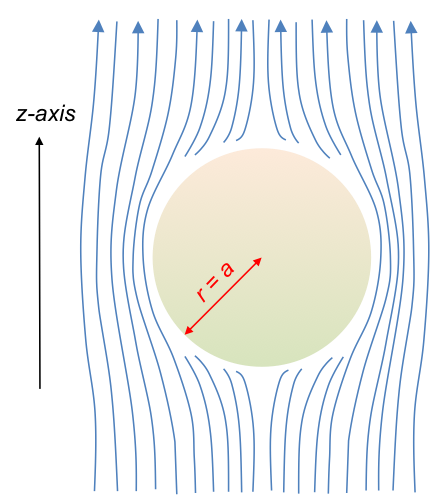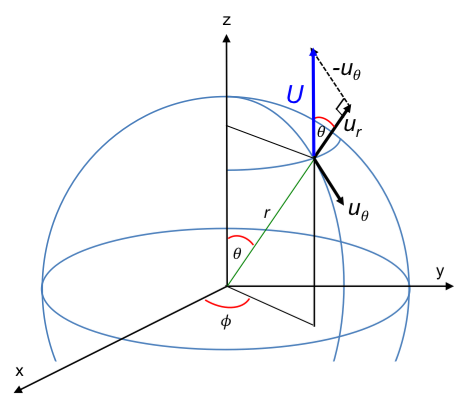The Stokes stream function is a mathematical representation of the trajectories of particles in a steady flow of fluid over an object. In other words, a plot of the Stokes stream function results in streamlines seen in the diagram below.

To derive the Stokes stream function, we make the following assumptions:
- The flow of the fluid is axisymmetric, i.e. defined along the polar axis (z-axis), and therefore the velocity components are independent of Φ.
- The fluid is incompressible and therefore has a constant density.
Eq12 of the previous article becomes:
Question
Show that .
Answer
The divergence of a function in spherical coordinate is:
If the flow is axisymmetric, the divergence of an axisymmetric flow function in spherical coordinates is exactly the LHS of eq13 and we can write eq13 as:
Eq14 is needed later for the derivation of the differential equation E2(E2ψ=0).
George Stokes developed the solution to eq13 by defining the Stokes stream function ψ where:
and
Question
Show that eq15 and eq16 satisfy eq13.
Answer
Substitute eq15 and eq16 in eq13:
Since , eq15 and eq16 satisfy eq13.
With reference to the diagram at the top of the page, the flow velocity u, which is defined in the z-direction, varies at different distances from the surface of the sphere. On the surface of the sphere,

At r = ∞, we assume that the flow velocity of the fluid is uniform. The flow velocity at any point in fluid at can be deconstructed into its radial and polar components (see above diagram) where:
and
Substitute eq15 in eq18 and eq16 in eq19, we have,
Integrating eq21, we get:
At r = ∞, r2 » a2, so
Eq17 and eq22 express the Stokes stream function for an incompressible fluid at the boundaries of r = a and r = ∞ respectively. In the next few articles, we shall define the Stokes stream function at a ≤ r ≤ ∞.

